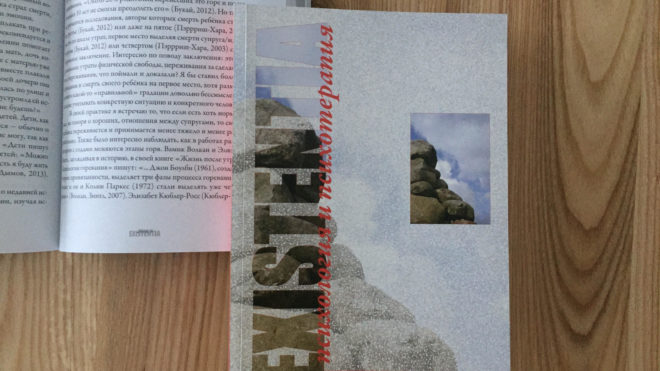Natalya Ivanova (Latvia) My creative palette (reflections on creativity in psychotherapy and supervision)
In my everyday and professional life, any difficult task has always been made much easier and exciting if I could turn it into a creative task for myself. This creative reflection always brings so much energy and a feeling of anticipation, it gives strength to implement what is intended and evoke special curiosity about how the idea will eventually work out.
The profession of psychotherapist is creative. It is a profession that requires going beyond the limits of current experience, both for the psychotherapist and the client. Without creative courage (according to Rollo May’s concept) the client is unable to build a new vision of his life, a new model of interaction with others and, in this way, to change the quality of his own life.
Psychotherapy is a different creative space, where a Session is a special act of creativity, which presupposes involvement and intensity of feelings, and sometimes a special effort. Psychotherapy is a meeting with yourself and your life, with your own world, during which an interconnection between personality and the world is established.
The creativity of a psychotherapist is not only in finding an individual key to each client, but in skillfully using it. It is crucial to decide, together with the client, which important door related to this period of life is to be opened. How is it possible to make sure that the client would himself take the key and decide to discover something important for himself together with his psychotherapist, and then would learn to do it in real life?
Unpredictability, uncertainty and ambiguousness are natural working conditions of a psychotherapist and at the same time, these are the conditions for creativity. In our work, there is a lot of space for a surprise and it is not possible to be prepared for everything. But, certainly, there is no place for boredom.
According to Carl Rogers, an important pre-requisite for creativity is the ability to be open to new experience or, in other words, tolerance to ambiguity. An essential condition for creativity is a person, his/her perceptions, bodily reactions as a basis and source for evaluation. One more condition is a capability to generate unusual combinations and concepts. Cultivation of such capabilities in psychotherapy would constitute a basis for a client’s creativity in his own life.
A therapeutic dialog is also a creative process. Sometimes an appropriate metaphor or an accurate association of the client’s situation or his problem helps the client to look more realistically at what is going on in his life, see contradictions in his mindset or usual behaviour. This sometimes reduces dramatism of perception.
Creativity in psychotherapy also requires trusting yourself in the most crucial moments. Therefore sometimes I share my perception of the world, my understanding of the values of life, with the clients, but I do it very briefly, just in one phrase. It may sometimes become important at critical moments of the client’s life.
An ability to concentrate is an essential distinctive characteristic of a creative personality (Fromm, 2004). At times, a pause during a therapy may mean such creative concentration. A pause charged with feelings, with deep reflections and insights regarding the contents of a session. Often, such pauses become a mutual, sometimes even mysterious experience of the moment both for the therapist and for the client.
New words, unusual phrases emerge as an indication of creativity of the client at work, and these new formations in subsequent therapy may become peculiar markers of some life phenomena.
Some clients happen to turn their experience into poetry. Creative conversations during sessions may arise through works of art by professional artists or by clients themselves. As a rule, this process is both creative and intimate in some ways.
Supervision always requires creativity, since its basis is a live dialogue. And it is the time for the psychotherapist to listen to himself. It means searching for something new in resolving his professional issues, something that is not immediately available to his reasoning or even incomprehensible. The aim is to reveal resourceful sides of the client and of the therapist, and their relationships, of which they may be initially unaware.
Creativity is one of the sources of joy and pleasure in life. On the other hand, creativity gives inner strength, energy and enthusiasm. And, finally, creativity means changing ourselves.

